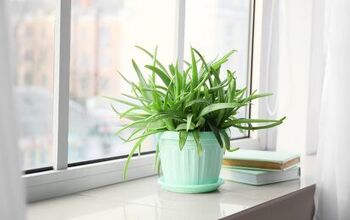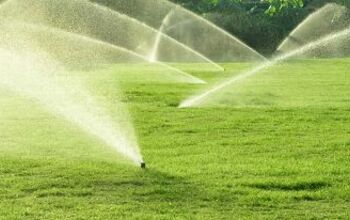Warning Signs That Your Garden Has A Fungus Problem

There are millions of fungi species growing around the world. Some fungi are harmless, some are delicious, and others are poisonous. Unfortunately, there are fungus varieties that can also be very harmful to your plants. Certain fungi can destroy entire gardens if left unchecked, which is why you must know all the warning signs that your garden has a fungus problem.
Some common signs that fungus is harming your garden include a white or rusty powder on a plant’s leaves or stems. Fuzzy mold and discolored leaves are also signs of a fungus problem. A fungus can cause wilted and stunted plants, weak roots, and root rot. A musty or decaying smell in your garden is another sign that you have a fungus issue.
A fungus problem in your garden is serious, and it can spread rapidly if left unchecked. One of the best ways to prevent mold and other fungi from destroying your plants is to know how to spot it in the early phases. Below is a list of top warning signs that your garden has a fungus issue, and steps you should take as soon as you notice this problem.
Nine Warning Signs That Your Garden Has A Fungus Problem
1. Unexplained Wilting
One of the first signs that your garden has a fungus problem is wilting and weakened plants. You may notice plants start looking a bit droopy, or leaves sagging and slowly dying. There are many reasons why plants can wilt, which can vary from soil conditions to improper watering.
If, however, your plants are wilting and you have ruled out all the common reasons for this issue, then fungus could be to blame. You should investigate further and search for more warning signs.
2. A White Powder Covering Your Plants
One of the most significant red flags that your garden is infected with fungi is a white powdery coating found on the leaves and stems of various plants. While it’s possible that a white powder can be dust or something else, there’s a good chance it’s powdery mildew, a dangerous fungus.
To check if this white powder is fungus, try to wipe it off. If it wipes off and is soft to the touch, it’s likely powdery mildew.
3. Discolored Leaves
White isn't the only color that indicates a fungus infestation is on your plant. Leaves can appear discolored in other ways as well. One common sign of fungus infestation is leaves changing from green to yellow or brown, which signals they are unhealthy or dying.
This often indicates the fungal issue is in the roots or inside the plant. Black and other colored spots on the plant could also be a sign that fungus has infected your plant.
4. Fuzzy Spots In Soil Or On Plants
Another telltale sign that there’s fungus in your garden is the sudden appearance of fuzzy matter. If you notice fuzzy mold in your soil or on plants that look similar to mold that grows on food, then you have a big problem.
This is mold, a type of fungus, and it can spread from plant to plant and within the soil very quickly. As soon as you notice fuzzy mold on a plant, you should get rid of the infected area, as it can spread rapidly.
5. A Musty Smell In Your Garden
Not all signs of fungi in the garden are visual. It’s possible to detect mold and other harmful garden fungus using your nose.
There are several off-putting smells you may notice when your garden has a fungus problem. A general mildew or musty smell is prevalent, as is a scent of decay, like wet rotting wood. You may even smell a more pungent rotting smell, depending on the specific type of fungus that’s made a home in your garden.
6. Weak Roots Or Root Rot
One symptom of a fungal infection in plants requires a bit of digging. This is because not all fungus is found above the ground. Sometimes the fungus spreads under the soil, attacking the roots.
If your plant has very weak roots, where the plant can be pulled up with minimal effort, then it might have a fungus issue. Root rot, especially a black and mushy root structure, can also indicate a fungal problem.
7. White Thread-like Fungus In The Soil
Another fungus symptom that often lies underneath the ground, or on its surface, is a white and threadlike substance. This thread or web-like fungus could be several things. There’s a chance it is mycelium, which is often beneficial (especially in compost piles).
If, however, this fungus is present with other signs on this list, then it could be white mold, which is very harmful to a garden.
8. Your Plants Have Stopped Growing
Stunted plant growth can occur for many reasons. Temperatures, light, and nutrients are just a few reasons why plants stop growing and flowering. If none of these factors seems to be the problem, then it could be fungus.
Fungus can prevent your plant from getting the nutrients and water it needs. It may also be robbing your plant of its existing nutrients. Your plant will react to this deficiency by halting its growth. If you notice many plants in your garden have stopped growing, then look for other signs of fungus.
9. Rusty Colored Powder On Leaves And Stems
Plants are not made of metal, which means there is no reason why they should rust. There are, however, types of fungus that can make your plants look like they are rusting. This fungus is commonly called rust fungus.
It often looks reddish brown in color, like classic rust. You are most likely to see it on leaves, but it can also make its way to the stems of your plants.
Five Things You Should Do As Soon As You Notice Mold
1. Remove Infected Plants Immediately
The first step you should take once you notice fungus killing plants in your garden is to remove all infected plants immediately. If there are any plants with fuzz, powder, or fungal spots, they should be discarded far away from the garden.
If an entire plant is dying due to fungal issues in the roots, you should remove it. It’s better to sacrifice a few plants than lose your entire garden.
2. Carefully Aerate The Soil And Improve Drainage
If the fungus in your garden originated in the soil, there’s a good chance poor aeration and soil drainage are to blame. When water drains freely, mold is less likely to appear and spread. To help get rid of moldy soil, carefully till the soil and improve the soil drainage using perlite or coarse sand.
Aerating the soil is best done on a dry and sunny day, as this will help kill mold ,so you can start fresh.
3. Add A Mold-Deterant To The Garden
Another way to stop fungus from growing in your garden is to fold in a mold-deterrent. It’s best to start with natural options that won’t destroy your garden’s ecosystem. Some organic methods include sprinkling cinnamon on the soil or even baking soda.
You can also make a DIY solution with neem oil to spray on your plants to stop fungus from growing.
4. Adjust Your Watering Routine
There’s a chance that overwatering caused your fungus issue. Overwatering is one of the most common gardening mistakes and can have serious consequences. If the fungus is in the ground, you should immediately adjust your watering routine.
Allow your soil to completely dry out before adding water. Never water a garden when the soil is still saturated.
5. Improve Air Circulation In The Garden
Another step you can take as soon as you notice a fungus infestation in your garden is to improve air circulation. Weeding your garden is a great place to start. You can also remove some shade leaves from larger plants, and even relocate and trim back some plants to create better airflow throughout your garden. Increased airflow will also help the sun reach your plants directly, which can deter mold from growing in the future.
Final Notes On Warning Signs That Your Garden Has Fungus
Some fungi are harmless, and even delicious. Unfortunately, many types of fungus can wreak havoc on your garden and quickly kill your favorite plants. To prevent this devastating loss, know all the warning signs that fungus has infested your garden.
White powder or rusty-colored film on leaves is a sign of fungus, as is fuzzy mold and white string mold near the surface. Weak roots and root rot can be signs of mold, as can a musty and decaying smell in your garden. If your plants stopped growing or look wilted, you should look closer for signs of mold.
Related Guides:
- Can Plants Cause Mold In The House?
- How To Prevent Mold In A Terrarium
- Eight Reasons Why Your Succulents Keep Dying

Tom Gaffey is an expert writer who currently resides in Washington D.C. Tom has a passion for real estate and home improvement writing, as well as travel and lifestyle writing. He lived the last twelve years in Hawaii where he worked closely with luxury resorts and event planners, mastering his knowledge of aesthetics and luxury products. This is where he found his passion for home improvement and a keen interest in DIY projects. Currently, Tom resides in Washington D.C, and also working on his debut fiction novel.
More by Tom Gaffey













![How Much Weight Can a 4×4 Support Horizontally? [It Depends!]](https://cdn-fastly.upgradedhome.com/media/2023/07/31/9070333/how-much-weight-can-a-44-support-horizontally-it-depends.jpg?size=350x220)













